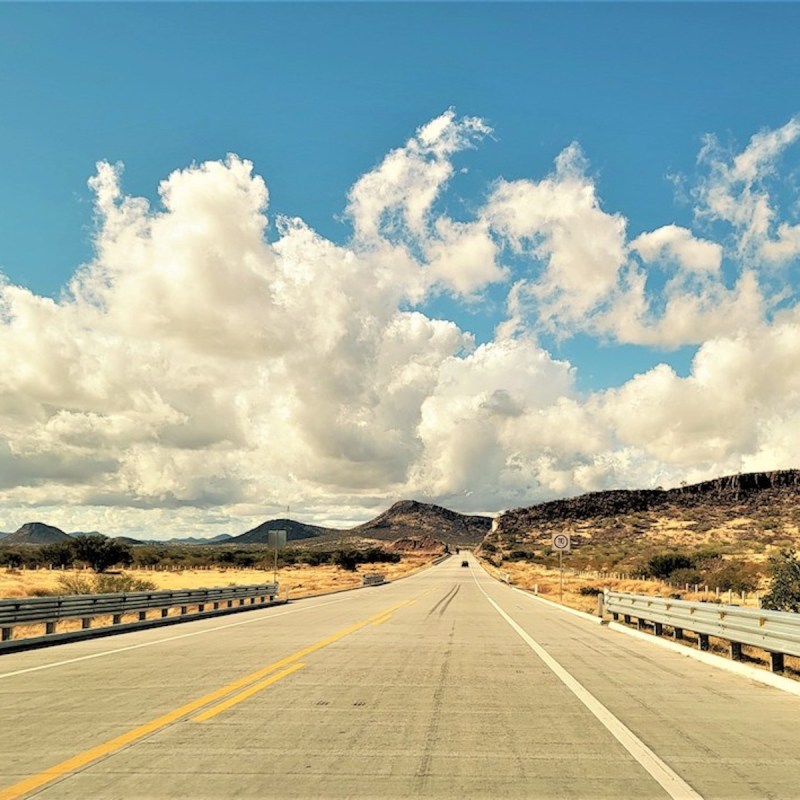
Our first road trip through Mexico was in 2009. On our second trip 8 years later, we made Mazatlan our winter home. Last December, we entered Mexico for the fifth time. Over those 12 years, roads have improved a lot. Because of COVID, port of entry requirements had changed but have now returned to normal. Sadly, travel advisories due to crime have gotten worse for the whole of Mexico. Certain cities, Mazatlan included, have become better. However, COVID has become a new area of consideration.
Videos by TravelAwaits
That is why we drive instead of fly; it’s still the safest way to travel in regards to COVID. We are not dependent on a public conveyance’s safety protocols and neither do we have to be thrown into big groups at close quarters.
It is also way cheaper. A direct flight from Mesa to Mazatlan costs about $700 per person in January. From our home in Mesa, Arizona driving through the states of Sonora and Sinaloa to Mazatlan is 906 miles. We spend only about $100 for fuel, $200 for 2 nights’ stay at hotels, and another $100 for tolls. We choose hotels with breakfast included, which gives us items for day snacks in the car. At the end of the day, we have dinner at the next hotel. All of this saves us almost $1,000.
Having a car in Mexico gives us some intangible benefits. We can bring as much as we need, like my husband’s golf and tennis paraphernalia, or my many outfits and pairs of shoes. And we can bring back things for the home, like bulky décor items and annual supplies of cheaper items. Finally, the car allows us to make day trips to nearby small towns or even farther destinations.

1. The Quality Of Roads
The first thing to consider is the quality of the roads you will need to drive through. The great news is that the roads we take have improved a lot since our first road trip when we took our 24-foot Class C motorhome through the country. Mexico 15, the highway that connects Arizona to Mazatlan, is part of the CANAMEX corridor from Canada to Mexico. In 2009, it was sadly peppered with holes; just fewer ones for the CUOTA (toll) vs the LIBRE (free) road that runs parallel. When we returned in 2017, we were pleased to find that the section through Sonora was almost completely concrete.

By our third and fourth trips, libramientos (bypasses) around the busy cities of Ciudad Obregon and Hermosillo in the state of Sonora, respectively, had been built. By our fifth trip, we noted that the entire trip had been reduced by at least an hour and a half. When the Sinaloan section improves, we can expect another reduction that will make the entire trip doable in 2 days instead of 3!
Be prepared for the kinds of roads you will have to traverse. Have your vehicles thoroughly checked and make sure all your tires, including the reserve, are ready for the trip. You must get Mexican vehicle insurance (see below) that gives you road assistance protection in Mexico. And check if you have what you need for emergencies like a first-aid kit, personal urinals, and a cooler for food and drinks.

2. Port Of Entry Requirements
Entry requirements have returned to normal. There is no longer a need for negative COVID tests, nor even proof of vaccination. On our route, there are two international ports of entry for passenger vehicles: Deconcini and Mariposa. We prefer the latter since it bypasses the Mexican border town of Nogales and leads directly to the Mexico 15D. As they say, border towns are more troublesome. Deconcini is a one-lane port of entry and goes through Grand Avenue in the town of Nogales before reaching Mexico 15. Both just let you through: the processing of permits is done at KM 21 down the road on Mexico 15D.

The process takes about 1-2 hours. Be prepared with your documents for the FMM (Forma Migratoria Multiple) for tourists, the TIP (Temporary Import Permit) for the vehicle, and the vehicle insurance. On our first trip, it took longer not only because it was our first time but because we had a scooter attached to our RV. Since we were not going to use it around Mexico, we were not prepared for its permit processing. The authorities said we still needed a permit or we would not be able to bring it back into the U.S.
We learned that the best thing is not to bring anything that you will not use. We also learned that the following steps save time:
- Fill out both permits (FMM and TIP) online
- Bring the original and copies of all required documents if you don’t fill them out online
- Purchase vehicle insurance before entering Mexico
- Have Mexican pesos
- Know a little bit of Spanish
3. The Risk Posed By Crime
Certainly, the prevalence of crime is what stops many people from visiting Mexico. The state of Sonora is at U.S. State Department Travel Advisory Level 3, meaning “Reconsider Travel.” I remember that a few years ago, nine members of a Mormon family were massacred near the town of Bavispe, Sonora, 70 miles south of the U.S. border, and only 5 and a half hours from where we usually stay for the first night. Worse, Mazatlan itself is at Travel Advisory Level 4, meaning “Do Not Travel.” In fact, it is where El Chapo was arrested. So why do we still spend winter in Mazatlan and drive through possibly troublesome spots to get there?
I did research and found something that helped guide us: the list of 50 Most Dangerous Cities of the World produced by the World Population Review. We first looked at it in 2019, and it was just recently updated for 2021. If a city’s murder rate is from 35-111 per 100,000 people, it is included on the ranked list. Here is the table of the top five countries that have the most dangerous cities, comparing the 2 years:
| 2019 | 2021 | |
| Brazil | 17 | 13 |
| Mexico | 12 | 15 |
| Venezuela | 6 | 6 |
| USA | 4 | 4 |
| South Africa | 3 | 3 |
The main change is at the top: Mexico has added three more cities, while Brazil delisted four. But here is the interesting fact: Mazatlan was #46 in 2019 — still below the USA cities of St. Louis (#13), Baltimore (#21), New Orleans (#44), and Detroit (#45) that year. That was my source of comfort then. In 2021, it was no longer even part of the list! That is my best source of comfort now. Please look at the list when you choose destinations in Mexico you want to visit.
Still, we take necessary precautions and inform the U.S. State Department of our itinerary so that they know how to get in touch with us whenever an emergency arises (please see this article on STEP, the Smart Traveler Enrollment Program). The list of other precautions we follow, aside from staying only at cities not on this list, are
- Travel only during midday, from 8 a.m. to 5 p.m.
- Stop only at U.S. hotel chains with breakfast included
- Bring snacks for the drive, then dine inside the hotel upon arrival
- Limit gas/rest stop to one per day, using only big and new PEMEX (government) stations.
4. The Risk Of COVID
COVID has introduced a new concern. What gave us the courage to travel to Mexico last December was that even with cases from the Omicron variant surging in other parts of the world, including the U.S., it was not quite the same in Mexico. Cases had quadrupled in the world and the U.S. but it has only doubled here. Besides, it has also reached a respectable percentage of fully vaccinated (2 doses) at nearly 60 percent, near that of the U.S. (64 percent at the time of this writing).
The CDC has a separate travel advisory for COVID. They do not advise any travel to Level 4 countries and recommend full vaccination to Level 3 countries. We prefer to look at the Mexican way, which details the COVID status in different parts of the country. It’s a “traffic light” system of coding cities and states as green, yellow, orange, and red. Green means almost normal except for masks, social distancing, temperature monitoring, and hand sanitizers. Yellow limits capacities, with more limitations for orange, and a complete lockdown for red.
Mazatlan and the whole route we took was coded green. In fact, Sinaloa has remained green; Sonora, however, has turned yellow. It would be best to bring your COVID kit of maximum protection masks, hand sanitizers, a temperature monitor, an oximeter, rapid antigen test kits, and immune system boosting supplements like zinc, vitamins C and D, NAC, quercetin, etc.
Yes, these are what we consider whenever we road trip into Mexico: the quality of roads, port of entry requirements, and crime and COVID risk. As you can see, we take pains to research, prepare accordingly, and take a lot of precautions for the privilege of enjoying what Mexico offers: a perfect climate, good food, golden beaches, and friendly people for truly inexpensive and fun winter breaks.
